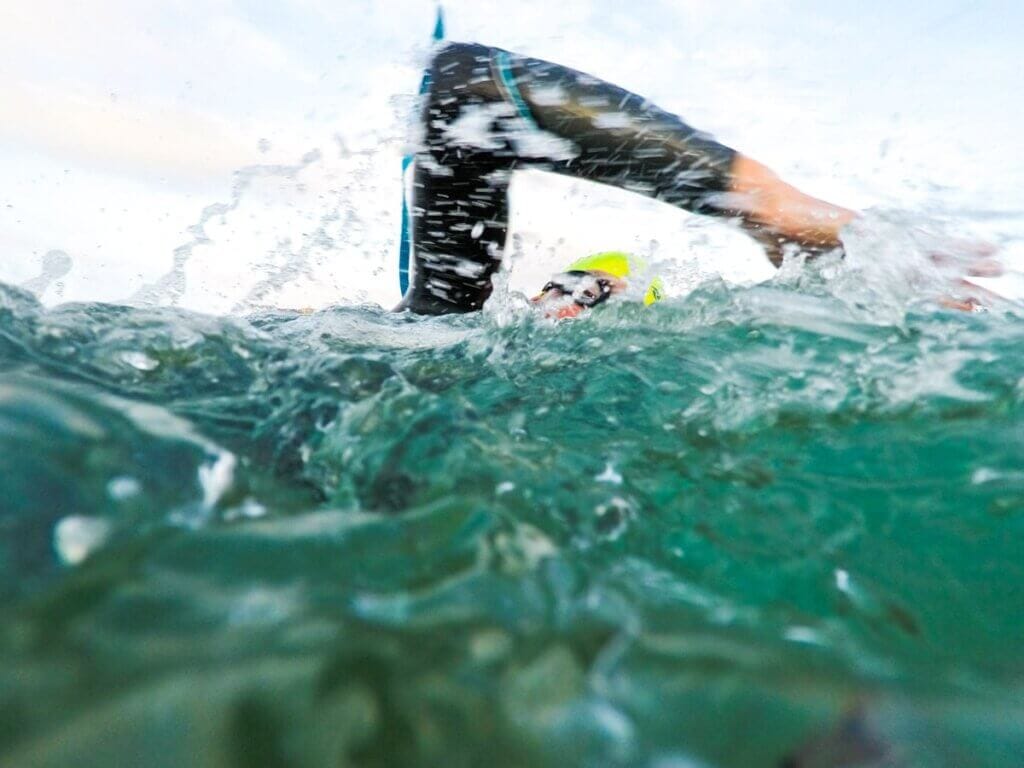Shark bite first aid for ocean swimmers

Do you know what to do if you or one of your swimming buddies get bitten by a shark while ocean swimming?
Did you know that it is not usually the shark bite that causes death but the loss of blood following?
A shark bite can lead to a life-threatening bleed if the bleeding is not stopped within 3-5 minutes, and with the average ambulance response time being 11 minutes it is crucial to know the correct first aid.
In this article, we explore how to survive an encounter with a shark, how to treat a shark bite, and how to minimise your risk of encountering a shark.
How to survive an encounter with a shark
Sharks are known to bump into their prey before attacking, they will usually nudge or brush past you.
If you feel something brush past you it is best to exit the water quickly, while remaining calm, and alert a lifeguard if one is on duty.
Sharks can sense fear and panic.
If you encounter a shark, whether it be up close or from a distance, it is important to remain calm.
If a shark is coming straight towards you and you don’t have enough time to exit the water you can try two things to reduce the severity:
- Put yourself into a vertical position and tread water to make yourself appear less like the shark’s usual prey; e.g. a seal, who is most often horizontal in the water.
- Strike the shark in the gills or eyes. This can be with a weapon such as a paddle, surfboard, diving knife or your fist. You want to gouge the shark in these areas to deter them.
How to treat a shark bite
If by any chance you do witness a shark attack while surfing or swimming, here’s how you can help:
- Call triple zero (000) for emergency services
- Apply pressure directly to the wound. If the wound continues to bleed following applying pressure, create a makeshift tourniquet (you can use a belt, surfboard leg rope or strap as a tourniquet)
- If it is an arterial bleed (this is when blood is spurting from the inside thigh, leg or upper arm) it will need to be contained quickly to avoid both bleeding out and shock
- Keep the person warm in either towels or jackets to reduce shock and if they begin to feel faint, lay them on their side in the recovery position. This will keep their airway open if you lose consciousness.
New technique to save shark bite victims
The Australian National University (ANU) has recently found a new technique that involves applying pressure near the victim’s groin.
According to the ANU, the most common cause of death from a shark bite is when victims who are bitten below the torso survive the initial attack but later died from blood loss.
Researchers have found that applying pressure to the femoral artery, running from the pelvis through to the thighs, could stop victims from bleeding out and help buy crucial time until paramedics arrive.
Lead researcher, Nicholas Taylor, said people only have a matter of minutes to stop the bleeding after trauma has occurred to the lower body.
“If a large artery is torn during the attack, you only have a few minutes to stop the bleed before you can almost completely lose all your blood volume. And it’s very hard to try and stop bleeding out of an artery by pushing on the wound itself,” said Dr Taylor.
“This new technique requires people to push hard halfway between the victims hips and bits, in the groin area,”
“You want to put your fist in the central midpoint area, halfway between the hips and bits, and push as much force as you can down through your straight arm through that point.”
“If you use a straight arm and your body weight from your back and shoulder it’s a much easier technique than trying to push down with your wrist or your forearm.”
This study showed the new first aid technique stopped 100 percent of blood flow in 75 percent of participants.
It was also found that blood flow was stopped on average 89.7 percent by making a fist and pushing hard on the midpoint, compared to using a tourniquet which only reduced blood flow by 43.8 percent.

Tips to minimise your risk of encountering a shark
- Avoid being in the water at dusk or dawn as sharks are more active during these times and sharks can see you but you can’t see them
- Avoid murky water or dirty water. When sharks can’t see clearly they resort to biting objects to explore their curiosity
- Avoid waters with signs of bait balls, seals, seabirds and fishing boats
- Chose to surf and swim in areas with lifeguards. They can alert you if a shark is spotted nearby
- Download the ‘SharkSmart’ app to be alerted when a shark is spotted in your area.
How ocean swimmers are coping with their shark fears
If you are hesitant about ocean swimming because of the risk of sharks take a read of this post from an Ocean Swimming Enthusiast (Facebook Group) about how they cope with the fear of sharks.

You can also read this feature article on oceanswims.com of Michele Bootes, an avid ocean swimmer whose perspective on sharks and ocean swimming has changed since being bitten by a shark.







Responses